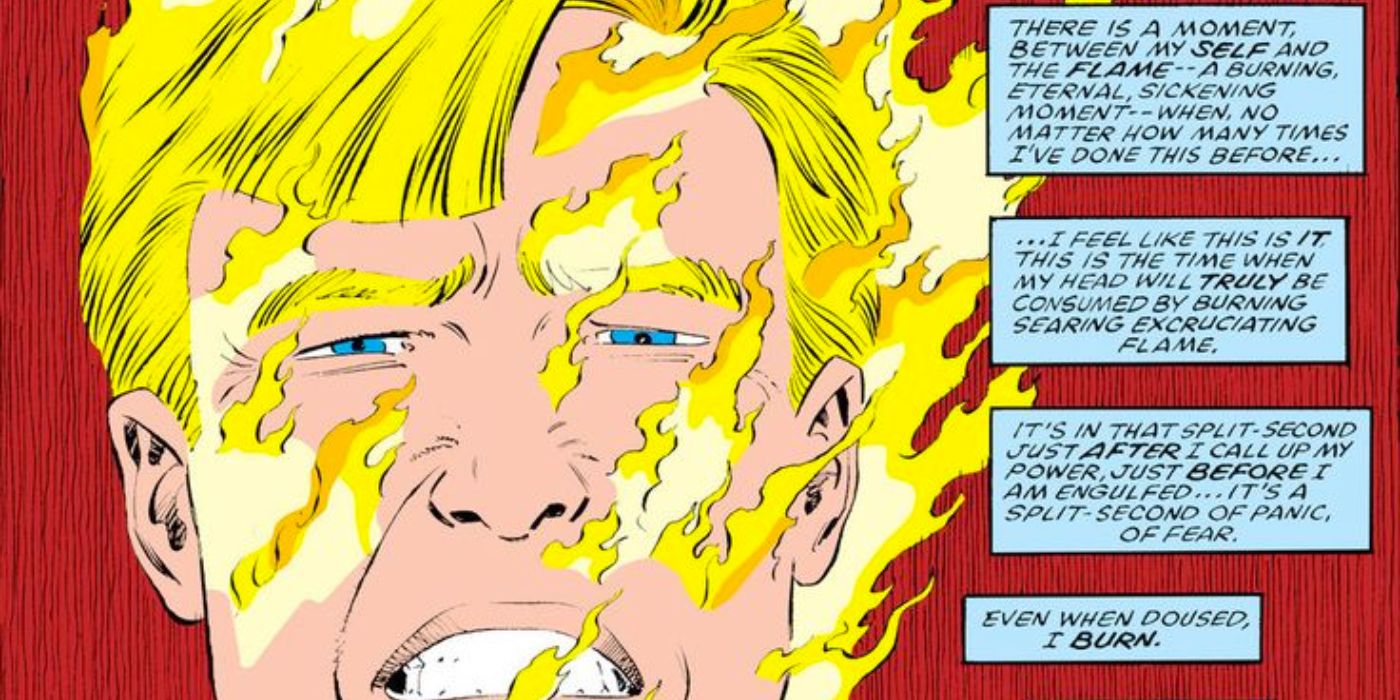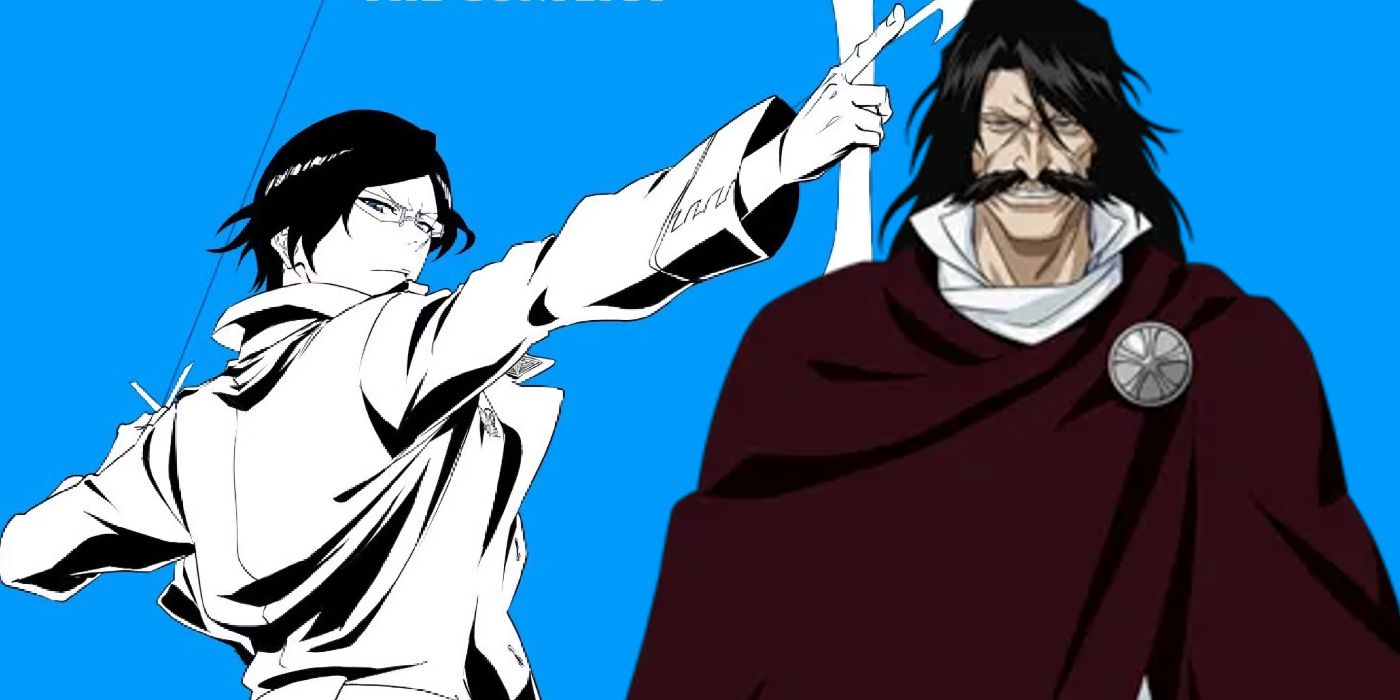Warning: spoilers for Suicide Squad: Blaze #1 are ahead.
The Human Torch of the Fantastic Four is one of Marvel Comics’ most popular characters, and an issue of Daredevil from 1988 proves why he has all the makings for a character from DC Comics’ new series, Suicide Squad: Blaze. With the ability to “flame on” and transform himself into a fiery juggernaut, Johnny Storm is one of the most high profile examples of pyrokinesis in superhero comics. And while he is just as famous for his confident and irreverent personality as he is for his ability to self-immolate on command, there is a strikingly horrifying truth about the Human Torch’s powers that is exposed in Daredevil #261 from Ann Nocenti, John Romita, Jr., Al Williamson, Gregory Wright, and Joe Rosen.
As part of the Inferno storyline, the issue opens with a striking panel of Johnny’s anguished face as he is consumed by flames. His narration reads, “There is a moment, between myself and the flame – a burning, eternal, sickening moment – when, no matter how many times I’ve done this before… I feel this is it. This is the time when my head will truly be consumed by burning searing excruciating flame. It’s in that split-second just after I call up my power, just before I am engulfed… it’s a split-second of panic, of fear. Even when doused, I burn. I always feel as if on fire.” While he is safely in control of his powers on the next page, Daredevil #261 reveals how terrifying it is for the Human Torch to call upon his powers.
It is for this reason that Marvel would have been able to explore the questions at the heart of DC Comics’ best new series, Suicide Squad: Blaze with the Human Torch a long time ago. Suicide Squad: Blaze from writer Si Spurrier and artist Aaron Campbell follows the creation of a new Task Force X where ordinary inmates are given extraordinary superpowers, with the catch that the powers will eventually lead to their fiery deaths in a few months’ time. With the first issue meshing body horror with the spectacle of superpowers, Suicide Squad: Blaze is subtly exploring the themes that writer Ann Nocenti first gestured towards with the Human Torch in Daredevil #261.

The fact that a hero like the Human Torch would be at home within a book about the Suicide Squad is an unexpected development, but one that ultimately gets at an oft-unrecognized truth about superpowers: they’re terrifying. While readers have become used to stories of immense physical transformation, in part due to Fantastic Four, Suicide Squad: Blaze illustrates the visceral horror of it, as members of Task Force X get a power boost after one of their teammates is killed. Just like the Human Torch, this new Suicide Squad are people who have every reason to be terrified of their own bodies.
Marvel Comics made superheroism something that could be attained later in life, rather than at birth, but often left the emotional and psychological toll of this development unexplored for characters like the Human Torch. This is precisely why the description of his transformation in Daredevil #261 is so striking: fans are not conditioned to seeing superpowers as an uncertain force of anxiety within heroes’ lives. Suicide Squad: Blaze picks up from the Human Torch’s appearance in Daredevil to show the dark side of manmade superpowers. While superheroes usually seem to be in complete control of their abilities, it does not take away from the fact that purposely setting oneself on fire is a deeply unnatural and unsettling activity. In effect, Suicide Squad: Blaze is exposing the reality of body horror that permeates the Marvel Universe, evident in characters like the Human Torch.



